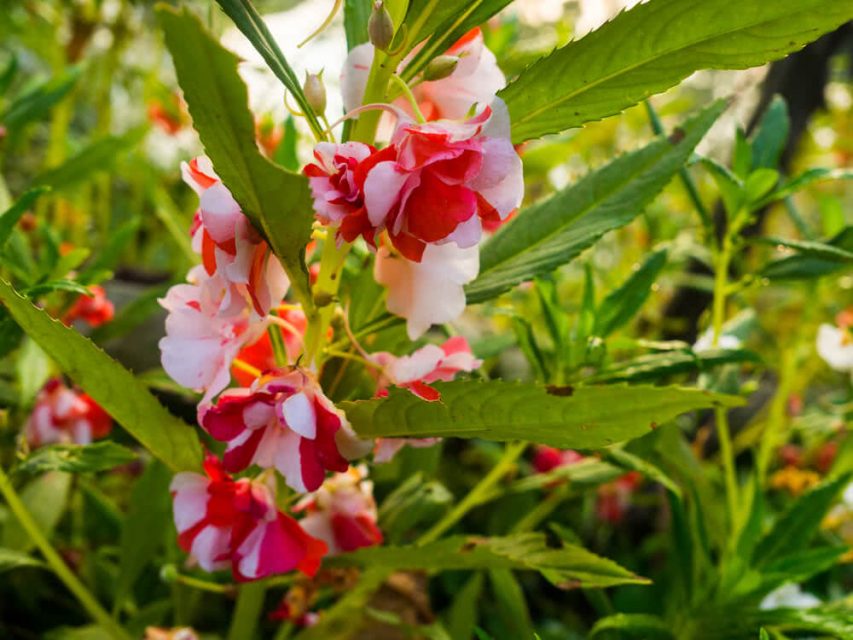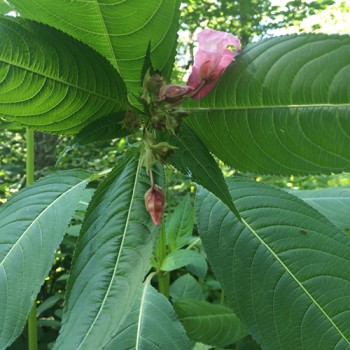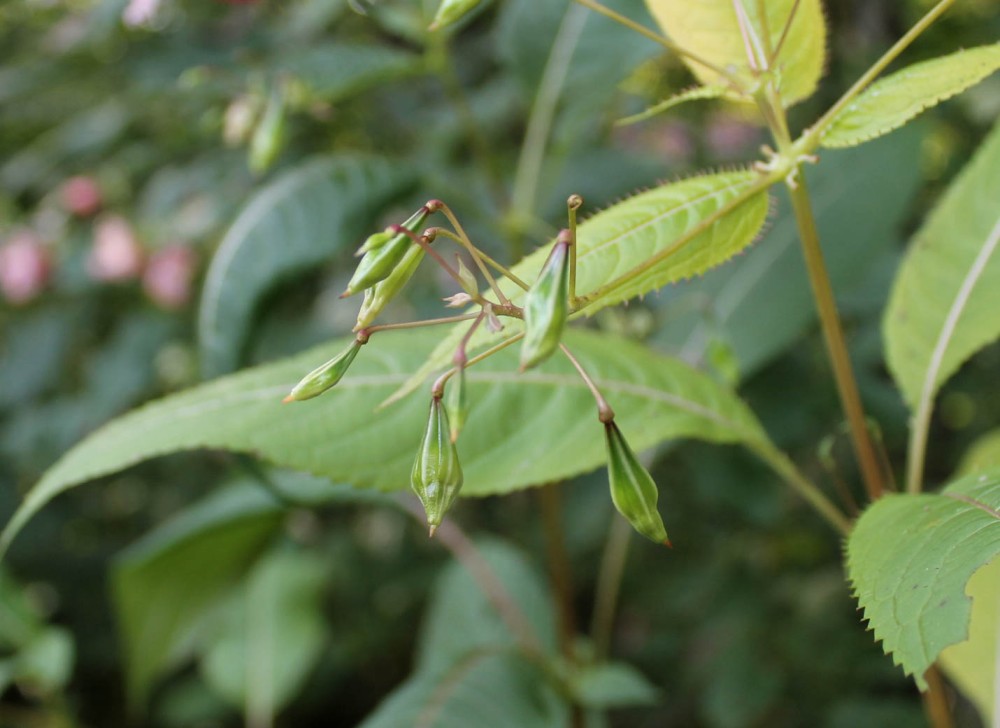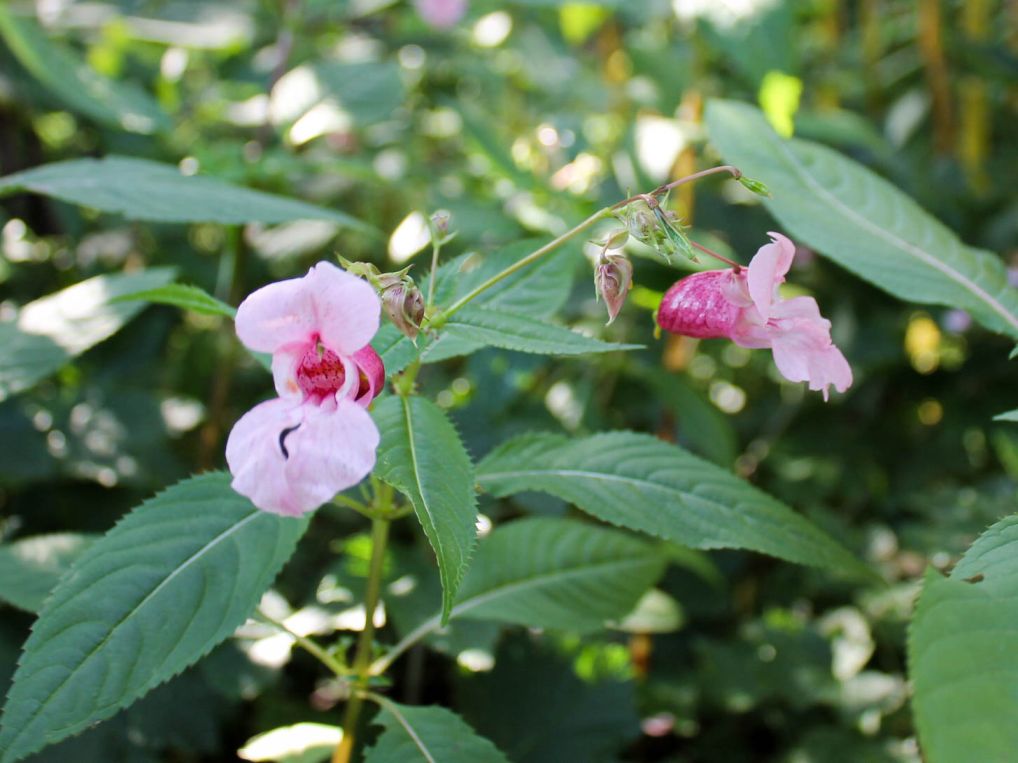Balsam plants, scientifically known as Impatiens, are colorful annual flowers that add vibrancy to any garden. With over 1000 species, there is a wide diversity of balsam plant varieties to choose from. While all balsam plants are prized for their bright blooms, each variety has its own distinct characteristics. Learning how to identify the different types of balsam plants is key to selecting the right one for your needs. In this article, we’ll explore some tips and key features to help you distinguish between the many balsam plant varieties.
Native to tropical regions of Africa and Asia balsam plants belong to the Balsaminaceae family. They are considered annuals in temperate climates, thriving in hot and humid environments. Balsams grow quickly reaching 1-3 feet tall in ideal conditions. The plants produce clusters of showy blooms in shades of pink, purple, red, and white. They are easy to grow from seed and require little maintenance.
Flower Color
The most obvious way to identify different balsam varieties is by observing the predominant flower color While most plants produce blooms in pink, red or purple hues, some unique varieties have white, orange or yellow flowers. For example, the Camellia Balsam exhibits fully double white blooms resembling a camellia. Take note of the flower color to help distinguish between varieties
Flower Shape and Size
In addition to color, the shape and size of the blooms can vary between balsam types. Some varieties have large, fuller double flowers like the Camellia Balsam. Others have single, open blooms like Rose Balsam. Dwarf balsam varieties may have smaller, more delicate flowers. Pay attention to whether the flowers are single, semi-double or fully double blooms.
Plant Height
Plant height is another useful identifying feature. Most balsam plants reach 1-3 feet tall at maturity. However, dwarf varieties such as Dwarf Jewel Mix only grow 6-12 inches tall. They have a compact, bushy habit. Taller varieties can reach up to 5 feet high. If your plant is significantly shorter or taller than the typical size, it likely indicates a specific dwarf or tall variety.
Leaf Appearance
The leaves can also provide clues about the balsam variety. The leaves are generally oval-shaped with a serrated margin. However, some types have more elongated, spear-shaped leaves. The size, shape and color intensity of the leaves can help pinpoint the variety. Variegated leaf types with streaks of color exist as well.
Growing Habit
Compare the overall growth habit and plant shape. Balsams generally have an upright, mounded shape. But some compact varieties are low and spreading. Others have a columnar shape. Analyze the plant’s form and branching pattern. For example, the Dwarf Bouquet Balsam has a tight, bushy habit.
Native Species
There are also native balsam species to look for like Jewelweed (Impatiens capensis) in North America. This variety has distinctive orange, spotted flowers and thrives in moist sites. Become familiar with native species and their unique traits.
Fragrance
Certain balsam varieties release a lovely fragrance, especially at night. Smell your plant’s flowers and leaves to detect any scent. Fragrant choices include Garden Balsam (Impatiens balsamina) and Camellia Balsam.
Optimal Site Conditions
Consider the light and soil preferences too. Most balsams thrive in part sun but some need shade while others require full sun. If your plant thrives in dry, sunny spots it likely indicates a heat-loving variety suited for those conditions. Factor in the site needs.
Know the Origins
The plant’s origins provide a hint as well. Some tender tropical varieties only thrive as annuals in temperate regions while hardier balsams can perennialize. Research your plant’s native environment for insights into its identity.
By carefully observing details like flower traits, plant size, leaf appearance, origins and growing requirements, you can accurately identify the different balsam varieties. Over time, you’ll recognize their unique features at a glance. Pay attention as your plants mature and reveal more identifying characteristics. Soon you’ll be able to distinguish between the many diverse and beautiful balsam plant types.
Common Balsam Varieties
To get started, here are some of the most popular varieties to look for:
-
Camellia Balsam: Large double blooms resembling camellias in white, pink or red. Grows 18-24 inches tall.
-
Rose Balsam: Delicate single blooms in pink and red hues. Grows 12-18 inches tall.
-
Garden Balsam: Whimsical tubular flowers in a mix of colors. Height 12-18 inches.
-
Busy Lizzie: Compact type with abundant small blooms in many colors. Height 6-12 inches.
-
Dwarf Jewel Mix: Extra compact at 6 inches tall with a blend of bright flowers.
-
Tom Thumb Mix: Bushy 8-inch tall plants smothered in flowers of all colors.
-
Crackerjack Mix: Large, ruffled double blooms on 18-inch plants.
-
Jubilee Mix: 24-inch columnar habit with massive flower heads.
By getting to know these popular varieties, you’ll have a reference point for identifying other balsam plant types you encounter. With so many diverse options to select from, balsams offer endless possibilities to add vivid color to gardens.

Himalayan Balsam (Impatiens glandulifera)French common name: Balsamine de l’Himalaya

Himalayan balsam is an invasive herbaceous plant that was initially introduced to North America as a garden ornamental.

When seed capsules mature and dry, they will explode when touched, shooting seeds in all directions!

Himalayan balsam flowers have a hooded shape that looks similar to a policemans helmet.
Order: EricalesFamily: Balsaminaceae
Did you know? Himalayan balsam closely resembles native jewelweed, another type of ‘touch-me-not’ plant.
Himalayan balsam is an invasive herbaceous plant that was initially introduced to North America as a garden ornamental. Himalayan balsam is widely distributed across Canada and can be found in eight provinces. Annual reproduction of this plant occurs in the summer, when the flowers are pollinated by insects. The insects may transfer pollen between flowers of conspecifics or from the same plant. Himalayan balsam typically grows to 1-3 m in height, with a soft green or red-tinged stem, and toothed leaves 5-23 cm long. The crushed foliage has a strong musty smell. Below the leaf stems the plant has glands that produce a sticky, sweet-smelling, nectar. Himalayan balsam flowers are pink, with a hooded shape, 3-4 cm tall and 2 cm broad; the flower shape has been compared to a policeman’s helmet. Himalayan balsam creates dense and tall stands that prevent native plants from establishing and reduce biodiversity. This plant is a prolific nectar producer and produces about 800 seeds per plant. This annual species can aggressively replace native perennial plants along riverbanks, leading to soil erosion.
Stem: The hollow, purple/reddish stem grow between 1-3 m tall.
Flowers: Himalayan balsam’s pink flowers are a key ID feature in the late growing season. The flowers have a hooded shape and look similar to a policeman’s helmet.
Leaves: This plant has long, toothed leaves 5-23 cm long.
Seeds: Himalayan balsam seed capsules will hold up to 16 seeds. This plant is a “touch-me-not” plant, which means that when its seed capsules mature and dry, they explode when touched. Seeds can spread up to 5 m from the parent plant.
Himalayan balsam is widely distributed across Canada and can be found all of provinces except Saskatchewan. It has naturalized in the United States.
Himalayan balsam produces dense stands, creating monocultures and reducing biodiversity by limiting nutrient and habitat availability and shading out native plants.
Himalayan balsam’s prolific nectar production draws pollinators away from other plants and is a main draw for gardeners wanting to attract more pollinating species. However, growing this plant should be avoided, as it spreads rapidly and will quickly overtake native species and reduce biodiversity.
One Himalayan balsam plant can produce over 800 seeds, allowing them to spread quickly – both naturally through wind and animal dispersal, and through human interference once the seed pods dry and explode when touched.
This species can aggressively replace native perennial plants along riverbanks, over time leading to soil erosion.
Mechanical control, by repeated cutting or mowing, is effective for large stands, but plants can regrow if the lower parts are left intact. Cutting the plant below the lowest node can help stop regeneration. Access to the sides of riverbanks can be difficult and inaccessible stands can quickly recolonise accessible cleared areas, so vigilance is needed if an area is to be effectively cleared.
Smaller infestations can be easily controlled by hand-pulling, as the root of Himalayan balsam is very shallow. However, management should only take place if there are no visible seeds, as disturbing the seeds can lead to further infestation in the disturbed soil. If management must take place when seeds are present (typically in late May), place a bag over the top of the plant to avoid further dispersal. As the seeds are not very robust and only last about 18 months, management can be completed in two years as long as proper disposal has occurred and all plants have been removed.
Once plants are removed, they should be placed in a black garbage bag and placed on an impermeable surface for up to 1 week. This will kill off any viable materials before disposal.
Tree Identification – Balsam Fir [Conifer Series]
FAQ
How do you identify a balsam?
What are the varieties of balsam plants?
How many types of balsam are there?
Is a balsam plant an annual or perennial?
What are the different types of balsam plants?
1. Impatiens Walleriana (Busy Lizzie) Impatiens walleriana, commonly known as Busy Lizzie, is one of the most popular types of balsam plants. It is prized for its bright and showy flowers that come in various shades of pink, purple, red, orange, and white.
What are the roots and stems of a balsam plant?
In this article, we will take an in-depth look at the roots and stems of the balsam plant. The root system of the balsam plant plays a vital role in its overall health and survival. Balsam plants have a fibrous root system that consists of numerous thin, branching roots that spread out horizontally in the soil.
What does a balsam plant look like?
Balsam plants have succulent stems that are typically green or reddish-brown in color. These stems are sturdy and upright, providing support for the leaves, flowers, and fruits of the plant. One notable characteristic of balsam plant stems is their ability to store water, which is particularly important during dry periods.
What is a balsam plant?
Balsam plants, also known as Impatiens, are a genus of flowering plants that belong to the family Balsaminaceae. These vibrant and colorful plants are popular for their bright blooms and ease of care, making them a favorite among gardeners. There are several types of balsam plants, each with its unique characteristics and growing requirements.
